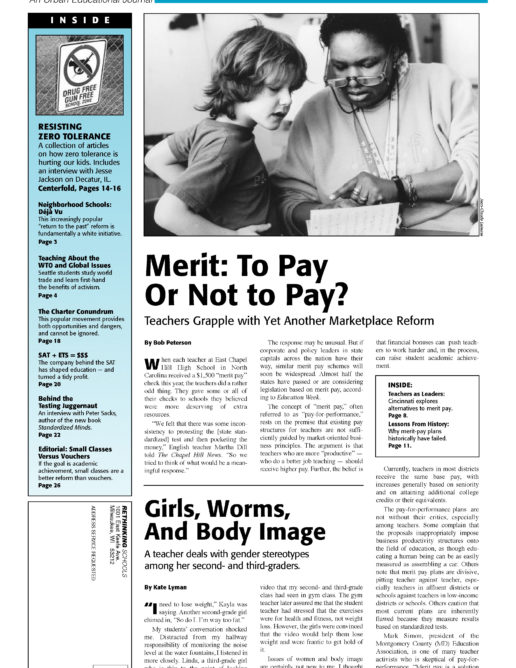Preview of Article:
First-Class Jails, Second-Class Schools
An interview with Jesse Jackson
Jesse Jackson: The Chicago Tribune did a full investigation of the fight, which took place at a high school football game on September 17, 1999.They found that the fight lasted 17 seconds and involved seven male students, all Black. They found that there were no guns, no drugs, no chains, no knives, no bloodshed, no injuries. The fight was less violent than a hockey match. They found that there was no premeditation. But the seven kids were expelled for two years!
At first, the principal suspended two or three of the boys for ten days. That would have been ordinary. But the Decatur school board overruled them, saying it had “zero tolerance,” and expelled the kids for two years. Two of the students were seniors with less than four credits to go for graduation.
At the hearing, the boys were not allowed counsel. They were not allowed to face their accusers. There was no cross examination. The parents were given no role, no degree of involvement. [Following protests, the board later reduced the expulsions to one year and allowed the students to enroll in an alternative program.]
CL: Why is this case so important? What do you think it represents?
JJ: Actually, once we got pulled into it, we thought it would be a relatively short stay, but it just got deeper. Decatur reveals the DNA of this racial crisis, this class crisis in the schools.
As I got deeper into it, I realized there is this tremendous anger towards America’s youth – three strikes and you’re out, mandatory sentencing, and so on. Politicians refuse to modernize schools, they cut out midnight basketball, but build all these new jails. First-class jails, second-class schools. This is zero tolerance.</p

